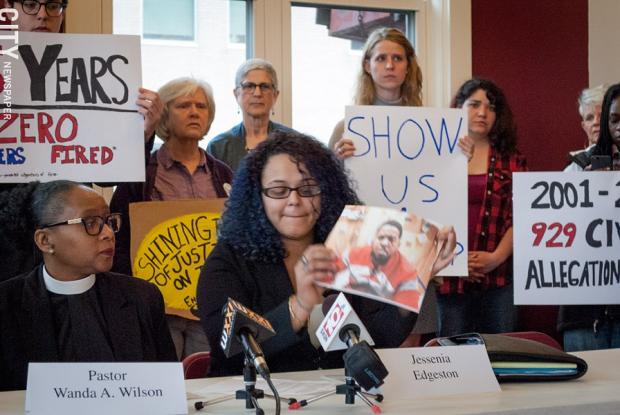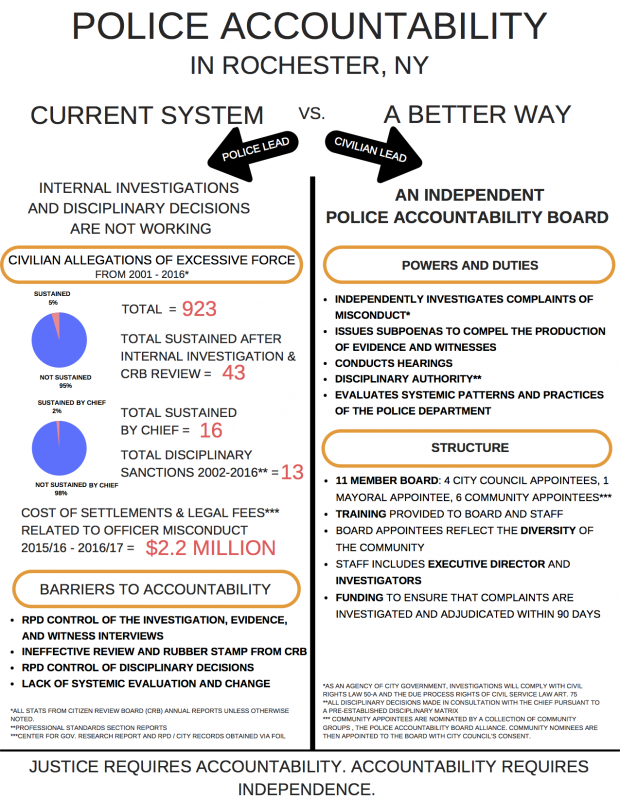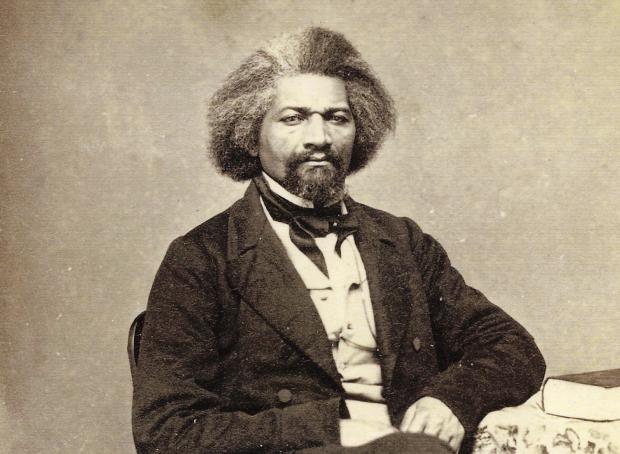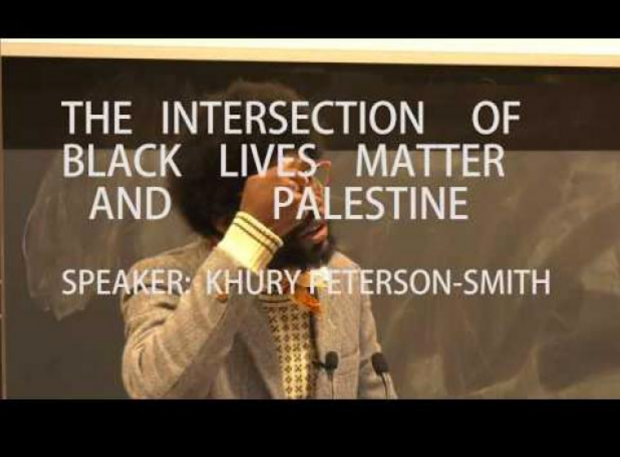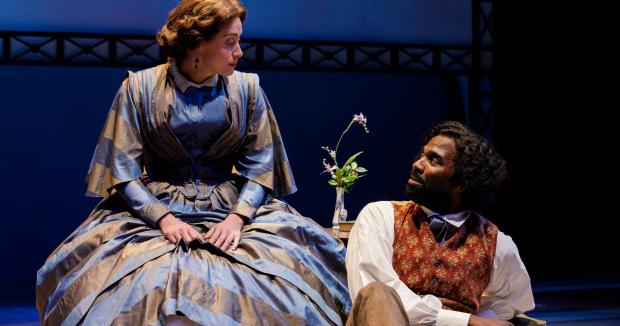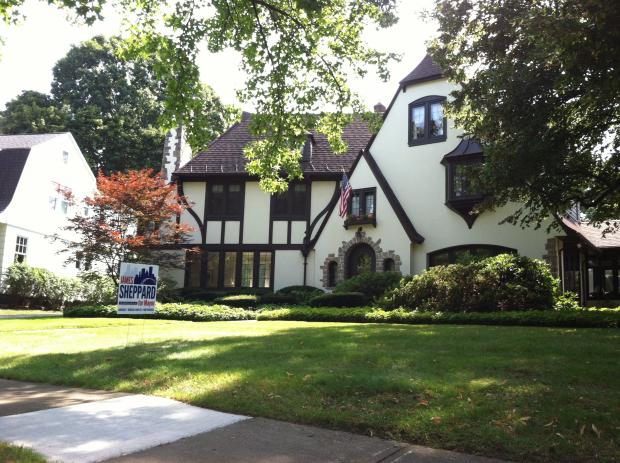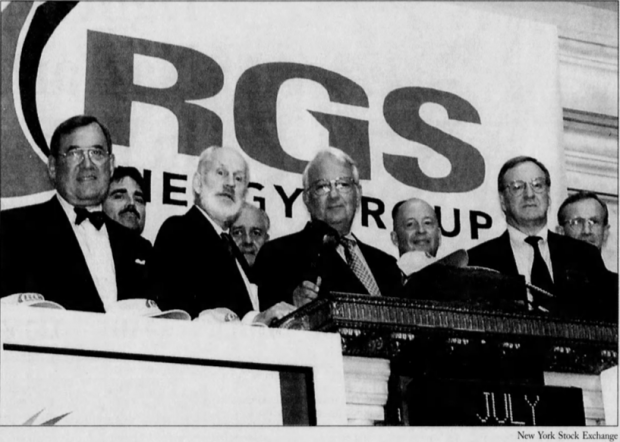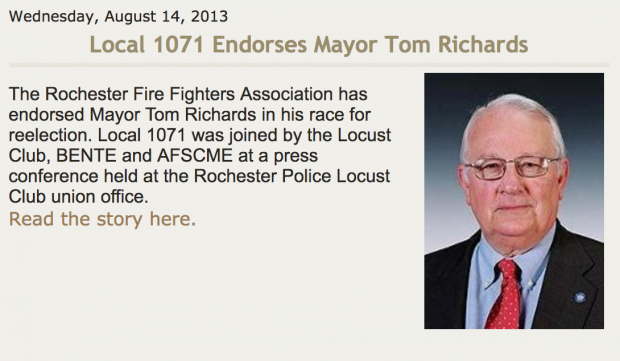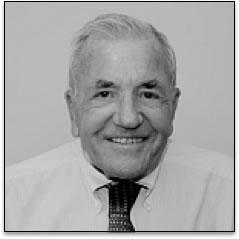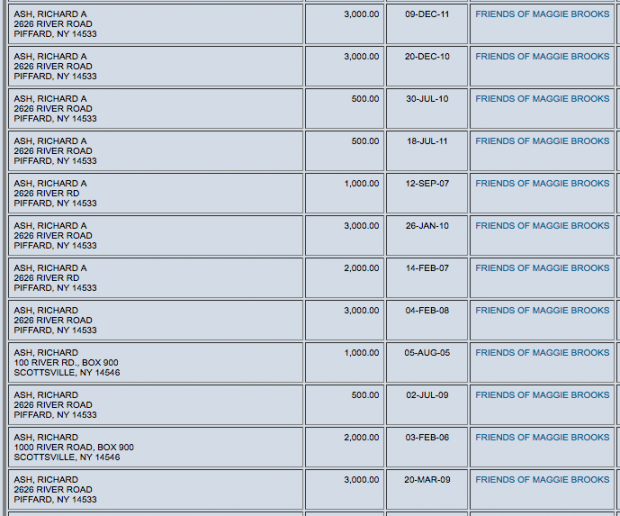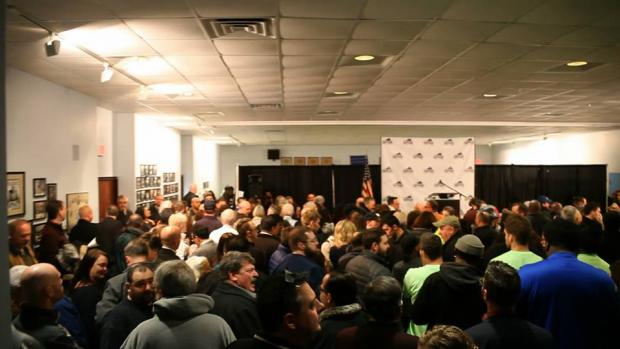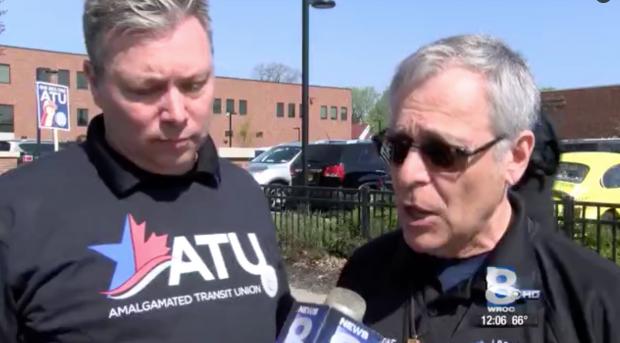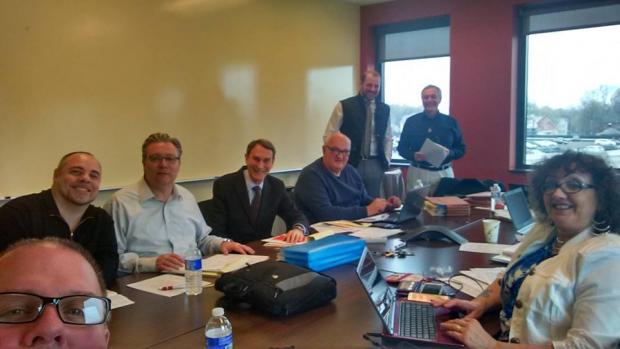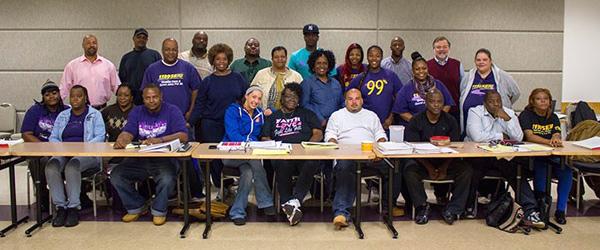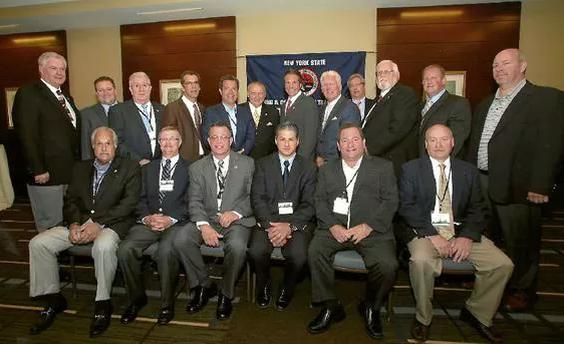Panel on the overhaul of bail, speedy trial & discovery laws in New York State
A panel was held in Rochester, NY on the overhaul of bail, speedy trial and discovery laws. 67% of the people in New York's jails have not been convicted. They are legally innocent but incarcerated in county jails because of New York’s broken bail, speedy trial and discovery laws.
The case of Kalief Browder, a high school student, who was accused of stealing a backpack and was jailed for nearly three years without trial. He refused to take a plea deal maintained his innocence and was given a $10,000 bail. For three years he waited for his day in court. While in jail he was beaten by other inmates, COs and kept in solitary confinement. When he did go to court, he was exonerated. Soon after his release, Kalief Browder committed suicide. All this because he was black and poor. This case is unfortunately not unique.
The panel will discuss the situation in Monroe county and the need to change these laws and the campaign to do that.
Community demands Police Accountability Board with discipline
Enough Is Enough held a press conference on Tuesday, February 20, 2018 to once again call on the City of Rochester to pass the Police Accountability Board and end a 50-year demand for community control and give civilians the power to independently investigate, adjudicate, and discipline Rochester Police Department officers for misconduct.
Press conference at Downtown United Presbyterian Church, Feb. 20, 2018
Jessenia Edgeston and Scean Gordon, both members of the organization, gave their stories of how police violence has directly affected them. Pastor Wanda Wilson from Open Arms Christian Fellowship Ministries listed the names of people affected and types of violence inflicted against them by Rochester Police Department officers. She called for the creation of a Police Accountability Board that would have 5 main powers:
- Independent investigative authority as an agency of city government independent from the RPD;
- Subpoena power to compel the production of evidence and witnesses;
- The authority to conduct misconduct hearings;
- Disciplinary authority; and
- The power to evaluate systemic patterns, practices, policies, and procedures of the RPD to recommend changes and prevent misconduct.
According to public statements, Enough Is Enough does two primary things: "First, we accompany people going through the criminal justice system that have experienced police brutality, racial profiling, and harassment by the Rochester Police Department. We offer emotional and tactical support, demystify the law, attend court proceedings, and provide direct support e.g. rides to meetings with lawyers or court appearances; and secondly, we work toward systemic change in law enforcement through policy recommendations supported by aggregate data and personal testimonies of police violence in our community."
Barbara Lacker-Ware, a member of Enough Is Enough, introduced those at the table including Sharlene and Frank Simmons and Pastor Nina Warr. Pastor Warr's husban Benny was terribly assaulted by three Rochester police officers (Joseph Ferrigno, Anthony Liberatore, and Mitchell Stewart) and Silvon Simmons, Frank and Sharlene's son was shot and nearly killed by officer Joseph Ferrigno after mis-identifying his vehicle, racially profiling Silvon, and then shooting him in the back three times. Simmons was indicted on charges of attempting to murder a police officer; the jury refused to believe Ferrigno's (or his partner, Sam Giancursio) story and acquitted him of the attempted murder charges. (Ferrigno has 23 excessive use of force complaints against him.)
photo: RYAN WILLIAMSON/City Newspaper
Lacker-Ware went on to explicate the problems with the Center for Governmental Research's paper looking at the process of civilian review of police misconduct in Rochester.
Enough Is Enough drafted a rebuttal to the CGR paper titled Achieving Police Accountability in Rochester: Clarifying misconceptions and adding commentary to the report on police oversight commissioned by City Council. Specificallty, the rebuttal looked at four concerns:
- Contrary to common misconceptions, state law does not preclude the proposed Police Accountability Board from disciplining officers.
- Analysis of the data concerning the current civilian review process needs to focus specifically on the most serious allegations: those filed by civilians concerning use of force.
- The relevant outcomes must go beyond sustain rates and include whether al- legations of misconduct ultimately result in discipline for the officers involved. Presently, civilian-initiated allegations of force rarely result in discipline (only 13 instances over the period 2002-16). Disciplinary power needs to be an essential feature of the proposed PAB.
- The Syracuse Citizen Review Board, which has independent power of investi- gation, sustained significantly more civilian-initiated allegations of force than Rochester’s CRB (four times more often over the period 2013-16). Independent investigatory authority needs to be an essential feature of the proposed PAB. E
Enough Is Enough said it's hopeful that City Council will evaluate and prioritize these concerns in the legislation that is ultimately enacted. Lacker-Ware said the group and its allies would attend City Council sessions until the Police Accountability Board was passed.
Media Coverage of the Press Conference: WHEC Channel 10 | Minority Reporter: Groups Renew Call for New Independent Civilian Review Board | Open Mic Rochester: Police Accountability Board Organizers: We Can Go Around Police Chiefs | WXXI: Group calls for police accountability board, has concerns about independent report | Push for stronger police oversight continues
Related: The Intersection of Black Lives Matter and Palestine | The Chickens Have Come Home to Roost; Another Rochester, NY Cop Shot | 2 Guatemalan Women and 6 Children Detained after Traffic Stop and Community Resists | What Black Lives Matter Means: Rochester’s Black Lives Matter at School and The Importance of Education | An Evening of Empowerment with Angela Davis | The Case for an Independent Police Accountability System: Transforming the Civilian Review Process in Rochester, New York (Feb. 2017) | Source documents pertaining to civilian review and police accountability | What rights? Police brutality in Rochester--a panel | InfoDoc on Rochester's failed Body Worn Camera draft policy | National Moment of Silence Against Police Brutality | Dept. invites public to make police union contract modification proposals | Police Brutality Aftermath: Rochester Calls for New Independent Civilian Review Board After October 7th Police Riot
Rochester Women's Rally 2018
One year after the inauguration of the 45th President, Rochester again rallied in Washington Square to protest his policies. Earlier that same day the Federal Government was shut down over a financial impasse with the White House and a dispute over immigration. While expressing their displeasure many of those who spoke also offered a path forward. Let us hope that those in DC will listen.
Part 1
Part 2
Part 3
Part 4 (final)
Photos on next page
Reflecting on Douglass
As we've been hearing lately (Connections: "Re-energizing the Legacy of Frederick Douglass"; 2018: Celebrating the 200th Anniversary of the Birth of Frederick Douglass; 3 days and 200 years of Frederick Douglass - or is that 199?), it is the 200th anniversary of the birth of the great orator, writer, and abolitionist Frederick Douglass. Rochester Indymedia was interested in how local activists view Douglass, his legacy, and how his work applies to them today. We are very happy to share the responses of Craig Carson, Bertha Tang, Phillip Miner, Javi Mason, Matt DeLaus, and Frederick Douglass. Thank you all!
Answers from Ancestors: A Brief Retrospective of a Young Frederick Douglass
“If there is no struggle, there is no progress. Those who profess to favor freedom, and yet depreciate agitation, are men who want crops without plowing up the ground. They want rain without thunder and lightning.” The words of Brotha Frederick Augustin Washington Bailey, or Frederick Douglass resound to this very day. Words that the #blacklivesmatters has learned the true meaning of in real time. On the 200th anniversary of Douglass’ birthday, lets vow to use his life as a cheat sheet to overcome bigotry and fulfill our mission.
As a child, Douglass was a slave to a man named Hugh Auld. Many of us are familiar with this part of Fred’s story because of Sophia Auld’s efforts at teaching young Fred to read. Yes, this is a pivotal part of his life. But, an additional focal point is the moment where Hugh and Sophia took a stance against what they had taught him. One day while reading a newspaper, Sophia, the same person that taught him how to read, snatched the newspaper out of young Frederick’s hands. Ironic right?! In later years, Frederick described Sophia Auld as a “kind and tenderhearted woman.” But it was the urging of Hugh Auld, her husband, that persuaded Sophia that learning and slavery were incompatible. Clearly she adopted this belief over her initial objections. Evidently, this highlights a few telling human themes. The power structure, or its agents will often give us resources necessary to improve ourselves. However, it is like a holiday clearance sale, it won’t last long and you better act fast. White allies are important to our struggle, but white patriarchy has the ability to recast them as soldiers for their cause, or simply neutralize them. Taking advantage of this angle is crucial. Stay vigilant, stay woke.
Take note, recognition of privilege or talent to help our people is paramount. Douglass thoroughly understood this. At or around 14 or 15 years old, under slave master William Freeland, Douglass began teaching as many as 40 slaves to read the Bible during Sunday school. Here, we observe Douglass using his reading skills and his own sense of goodwill to liberate black folks. Sadly, a small coalition of masters put an end to these sessions. Nonetheless, these sessions taught biblical spirituality and reading for approximately for 6 months. At the point where the meetings ended, I would imagine many people were far more learned. Furthermore, this illuminated the points that youth and revolutionary conduct can be more powerful and profound than age and experience.
Taking a stand to protect our dignity and further the revolution is critical. In this modern 21st century climate, we often day-dream of conquering our boss or someone with authority over us. One of the most epic moments in Douglass’ life was him kicking his slave master’s ass. After Hugh Auld (Fred’s old master), found out about the Sunday school lessons, he passed Fred off to Edward Covey, a brutal master known to “break” slaves. After numerous confrontations, Fred won a physical fight against Covey. Subsequently, Covey never messed with Fred again. As local activist Adrian Elim has said on many occasions, “you must teach people how to treat you.” This means we must check people, defend ourselves and challenge people to give respect we are owed. As Malcolm X said, “By any means necessary.” Sometimes force is a necessary component of change. This moment in Douglass’ life bolsters the position that an intrepid defense and advancement of our cause ensures progression. Sometimes it is only sacrifice, the unthinkable and the riskiest propositions that will be conducive to liberation. Change will not come by itself, we must put in the work.
At age 19, Douglass met his first wife, a free woman, Anna Murray. This is the intersection of a many unique themes. First of which, the black woman is crucial to the elevation of our people. She has been, in many ways, the certified leader amongst us. We must give her the credit she truly deserves and not write her out of history as we have done traditionally. In fact, it was Anna Murray, soon to be Anna Murray-Douglass that affirmed Frederick Douglass belief in freedom. This was part of the fabric of Anna Murray’s character as she was born free and so were her siblings. Sistah Murray-Douglass represented freedom to Fred. Approximately two times before he met Murray-Douglass, he tried to escape and failed. But it was not until the third attempt, that he did so successfully. What is important is that he was successful because of the extension of the Philadelphia, Wilmington & Baltimore Railroad line and Murray-Douglass’ help. In previous years, this rail line did not extend to the area in which Douglass resided. Douglass’ previous attempts were in 1836 and 1837, his final successful attempt was on September 3,1838 (perhaps the Canton Station-further east of the historic President Street Station built early 1850). This rail line was extended around February 3, 1838. The only reason Douglass was fully successful is that the train workers believed Douglass was a seaman. This was possible because Anna Murray provided seaman papers, so he could pose as a free black navy man, who was part of the freeman class during this era. So freedom for Douglass in this instance was a combination of factors. First, he kept trying and was hopeful about freedom. Second, the privilege, ideal and encouragement of the black woman gave him resources and support necessary to prevail. Lastly, technology and the development of society proved crucial to giving Douglass the additional element need to escape the reach of his putative captors.
Although many people may not examine Frederick Douglass closely when we consider the goals of the #blacklivesmatter movement, despite this inclination, we must be thorough and observe such crucial moments as they are easily applicable to the modern struggle. His constant urging for freedom, his tireless efforts to improve himself/his people and his inimitable talent at highlighting irony of American mores of the time and being black in America acted as a paradigm available for ruminations on this topic. So when Brotha Douglass emphasized the words: “If there is no struggle, there is no progress” I submit to you, this is a challenge to find the modern day answer to liberation in the moments of yesteryear authored by our ancestors.
Mr. Craig Carson is an attorney and activist that hails from the 19th Ward. He firmly believes in Ubuntu and Communalism as philosophies that can cure and heal our communities.
––––––––––––––––––––––––––––––––––
Dear Mr. Douglass:
The first time I stepped into your library, I felt like an intruder. This quiet but vibrant sanctuary, filled with industrious adults and children from the after-school program, was a sacred space of learning and community. I thought of you, and the beauty of this glorious place, and for a moment I contemplated retreating so as not to disturb its sanctity.
Before I could make good my escape, one of the librarians noticed me standing lost and staring. She smiled at me, warm and curious, dark eyes crinkling in her expressive brown face. I mumbled my request awkwardly, sending ripples through the library. Children looked up from their books and coloring pages, a beautiful rainbow of skin tones from tan to dusky brown, to watch this strange interloper in their midst.
A gentleman walked up beside me, and another librarian greeted him. Together, they moved into one of the sections of books, conversing in hushed tones about what he was looking for, and how he might find it.
The sense of alienation I felt in your library is nothing new to me. Since coming to America, I have found an endless parade of places and experiences that were not meant for someone like me. Even walking down the street, I’ve had to get used to side-eye glances and outright stares, pale faces puckered in disapproval, pale eyes narrowed in disdain. I imagine you know all about it, far better than I.
This time, instead of raging against the feeling of alienation, I worked to embrace that sensation. Here was a community of gentle souls and happy children. They too are familiar with the frowns, the judgments, and worse. I may not belong here in your library, Mr. Douglass, but if I may be so bold, I think your library is a haven for my kin nonetheless.
Since that first visit, I’ve returned several times, and visited the connected school and recreation center as well. The energy and enthusiasm of its children and staff never fail to bring a smile to my face. In the gym and on the playground, children run and climb, shout and play. It’s enough to make me weep for joy. I wish you could be here to see it.
It is terrifying and incomprehensible to me that there are, even now, people who fail to see the beauty of it. It is nauseating and enraging that there are people who are not moved by the senseless murder of a child, simply because that child is black. These thoughts haunt me even as I behold the joy and vivacity of your children. These nightmares and worse must haunt you too, far crueler than I.
I draw strength from your library, Mr. Douglass. I may not belong there, but your descendants are my cousins, and their triumphs are my joy, their oppression my pain. Since you left us, we have come some way to freedom and equality, and we will march on, ‘til victory is won.
May you rest in power, always.
Bertha Tang is a queer Chinese American immigrant woman. She is an engineer, artist, powerlifter, and polyglot. In her spare time, she can be found in the gym with occasional paint stains under her nails.
––––––––––––––––––––––––––––––––––
Frederick Douglass Would Urge Us to Press On
Rochester, NY is days away (as of the writing of this article) from celebrating the birthday of abolitionist Frederick Douglass on January 15. Rather than either lamenting his loss or becoming complacent at the current national situation, the example of Frederick Douglass should urge us in the present day to fight for justice in America more than ever.
In the interest of full disclosure, let me get a couple of things out of the way: first, I’m white, and second, I’m not an expert on the life of Frederick Douglass. Much of my information on him comes from what little I can recall from my school days, and of course from internet search engines like Google. But what I do remember, and what I’ve come to find out in the process of writing this article, has been inspirational, and I hope it can be that way for others, too.
The key takeaways from what I’ve remembered and learned anew about Frederick Douglass can be summarized in two points: one, that there can be no good without an evil for the good to oppose, making fighting the good fight even more important; and two, that our destiny is always in our hands, and it can only be taken away by others if we let them. Please do not take these two points I elucidate to mean that I condone what evil people do, or that I blame those obviously victimized by the American system. Instead, the reason I make these two points about Frederick Douglass’s life is to demonstrate that nothing we do to fight the good fight in America is ever in vain, and there is renewed importance that we keep it up.
I personally believe we lost sight of these points during the Obama presidency and the 2016 election. When Obama became President in 2008, many on the progressive left were expecting a savior figure, someone to fix all of America’s problems with a wave of a magic wand or the equivalent. Even though Obama is the same race as Frederick Douglass, I highly doubt Mr. Douglass would have been naïve enough to place all his hopes on one President. After all, as Mr. Douglass said: “Those who profess to favor freedom, and yet depreciate agitation, are men who want crops without plowing up the ground.” Putting all of the progressive left’s eggs in one basket like many did with President Obama was essentially putting down the plough that so many bore and expecting one man to do it all for them. I am well aware there were many wise people on the progressive left who did no such thing, who kept up the fight even (and especially) when President Obama was in office, but they were unsuccessful in convincing many constituents of the need to keep up the pressure. After all, Mr. Douglass also said: “Power concedes nothing without demand; it never did and it never will.” Clearly more demand was needed during Obama’s presidency.
This sort of complacency I believe is also responsible for the moral decline and fall of the Republican Party. As President Trump and many of his supporters have demonstrated, the Republican Party is now the polar opposite of what Frederick Douglass once supported when he was alive. Mr. Douglass would not support today’s Republican Party in any way, shape or form. However, Mr. Douglass would still not give up the struggle for racial justice in America if he were still alive today and saw what was happening. I’ve seen many on the progressive left simply give up the fight and abandon all hope once Trump won the 2016 election. They may as well have died with the hurry they placed on abandoning the racial justice movement. Mr. Douglass would not stand for this. He has said that “it is easier to build strong children than to repair broken men;” he would not stand for the abandonment of the struggle in America for racial justice as he knows the strength of our children depend on our strength as adults in the struggle. Mr. Douglass would also say the election of Trump is a lesson that our struggles will be lifelong, and that makes the fight for racial justice not futile, but all the more important. After all: “People might not get all they work for in this world, but they must certainly work for all they get.”
I write this article as weary as many on the progressive left are at this moment. I’ve had my moments where I just wanted to give up as well. But to give up now would be to insult not only Frederick Douglass’s legacy, but ours as well. I leave you with this last quote from Frederick Douglass: “I prefer to be true to myself, even at the hazard of incurring the ridicule of others, rather than to be false, and to incur my own abhorrence.” Do we want to abandon our idealism and just take it lying down? Do we really want to give up when deep down in our hearts and souls we know we should press on? Do we really want to succumb to darkness, when we know it is against our very nature to abandon the light of racial justice so easily? We’ve had victories before and we will win them again, that is unless we collectively give up now. It’s important not only for Frederick Douglass’s legacy, but that of our own, that we fight now more than ever.
Phillip Miner has been a freelance writer for over a decade, having studied liberal arts at Hampshire College. He has been published in multiple local publications, from CITY Newspaper to the Messenger Post Media.
––––––––––––––––––––––––––––––––––
Pathway to Freedom: The Activism of Frederick Douglass and Importance of Education
“Knowledge is the pathway from slavery to freedom.”
--Frederick Douglass, social reformer, orator, journalist, author, and statesman
Frederick Douglass discovered the power of words when he was first introduced to the alphabet. Sophia Auld, wife of slave owner Hugh Auld, introduced the then twelve year old Douglass to the row of letter used to construct words that would eventually be woven into sentences. Even after the day Sophia snatched a newspaper out of the young boy’s hands, his thirst for knowledge only drove Douglass teach himself how to read and write. In turn, he managed to teach fellow slaves these life-changing skills unnoticed for six months before slave owners learned of the lessons. Nevertheless, Douglass continued his education, ultimately becoming one of the most prolific figures in Black history.
Though his history in politics is extensive, Douglass is best recognized for his literary activism. During his lifetime, he penned three autobiographies, Narrative of the Life of Frederick Douglass, an American Slave, My Bondage and My Freedom, and Life and Times of Frederick Douglass, the first becoming a bestseller and translated into French and Dutch. He went on to publish his first newspaper, The North Star, one that centered abolitionist politics. He soon merged his publication with that of Gerrit Smith’s Liberty Party Paper to create Frederick Douglass’s Paper.
After he and his first wife Anna Murry-Douglass relocated to New Bradford, Massachusetts, Douglass joined the African Methodist Episcopal Zion Church. It was there that he became a licensed preacher, which helped him polished the oratorical skills he will employ to speak against slavery. He believed that all people—regardless of their ethnicity or gender—was to be treated and revered as a human being, traveling internationally to regions such as England, Ireland, and France to advocate for and discuss equality as well as the elimination of slavery in the United States.
Douglass was also known for his intersectional politics regarding gender and racial equality, being the first Black political figure to speak at the Seneca Falls Convention—the first women’s rights convention. When Elizabeth Cady Stanton proposed a resolution for women’s suffrage, Douglass spoke in favor of it, stating he could not accept the right to vote as a Black man if the same privilege was not extended to his female counterparts. He was one of the reasons why the resolution was passed in July 1848 after 100 of 300 attendees signed the Declaration of Sentiments.
Douglass also argued for desegregation as he staunchly believed that education would liberate Black people. He scrutinized New York’s educational institutions and facilities for Black children, correctly deeming them inferior to that of White children. This fact prompted him to call for court action to open all schools to Black children to grant them the opportunity to be receive adequate education. To this day, the fight for proper education for Black and Brown children continues—one that is founded on the deep-seeded fear of retaliation for the historical/generational trauma people of color consistently endure. The fear of retaliation is also accompanied by the fear of the disenfranchised empowering themselves through self-education. The Eurocentric education model thrives off the ignorance of those who do not understand their own history as doing so will encourage investigation, which in turn will invoke much-needed changes to the current system. This involves holding the industrial complexes accountable through action, something that can and will dismantle the very systems that have capitalized off the ”failures” of Black and Brown people.
Douglass recognized this dynamic when he was a slave through self-education and keen observation. He noticed over time that slave masters utilized extreme measures to dehumanize their slaves to disempower them. By breaking their spirits, the slave became too frightened and exhausted to ask questions or to pursue a better existence then the one they were experiencing. Be that as it may, these surveillances only encouraged Douglass to teach fellow slaves to read and write because he knew that literacy will grant him and other people of color the education necessary for self-empowerment.
Even after his death, Douglass’s work continues to influence the political ideologies of numerous activists—especially of those living in Rochester, New York. Local activists like Rachel McKibbens, KaeLyn Rich, Christopher Coles, Tonya Noel, and others use their individual talents to advocate for the equity required to achieve absolute freedom. These change agents recognize that the necessity of equity can only be understood through extensive education, which is the very foundation of knowledge.
The legacy of Frederick Douglass encourages activists of color to internalize the significance of education. What follows is a plethora of knowledge that can be propagated in order to spread awareness about the injustices inflicted upon the disenfranchised. Only then can people act on their own behalf and that of others to achieve true freedom from the burdens of oppression.
Javi Mason is an independent author, podcaster, instructor, poet, and storyteller. They are currently living in Rochester, NY with their cat son, Tobias.
––––––––––––––––––––––––––––––––––
He is gone (just to remind you, oppressor in chief), but not forgotten.
Frederick Douglass was an agitator. An innovator. A writer. A scholar. A preacher who proclaimed “Welcome Atheism!” over people using the Christian religion to defend slavery. A man whose impact on history cannot be measured. A man whose history is intertwined with our great, divided city.
He was able to change perceptions of people who would never meet him. Many critics said of his first book that it “couldn’t have been written by a negro”. He was the change he wanted to see in the world (long before people misattributed this being said by Mahatma Gandhi), and accomplished and changed his situation more than most of us could ever hope to do. He was a seminal force in the abolition of slavery and the period following it.
Today, we don’t have slavery (the closest thing to it being prison labor, which is gross and something everyone should be outraged about). The closest thing to it that affects our nation as a whole and our city specifically is not even individual racism, it is institutional and structural racism.
We can all imagine what individual racism is, its very visible and the easiest to point out, person to person racism. That is usually the only type of racism we envision when we think of racism. But the more pervasive and arguably harmful in our society are institutional and structural racism. Institutional forms of racism are policies, practices and procedures that work to the benefit of white people and to the detriment of people of color. One form of institutional racism that still affects our city today is redlining. Redlining was the process of banks (because of designations by the federal government) not providing loans to neighborhoods they deemed “bad”, and these neighborhoods were almost exclusively black and brown neighborhoods. This stopped people of color from being able to move to the suburbs in the 50’s (and the reason for white flight).
Structural racism is the history and current reality of institutional racism across all institutions. This combines to create a system that negatively impacts communities of color. It is the sum of all other forms of racism, the tangible, daily effect on our society and those who live in it.
None of this is “comfortable”. No one wants to admit privilege, or how divided our society is, especially if you don’t feel the effects of it every day. But as Frederick Douglass said: “Knowledge is the pathway from slavery to freedom”. When people dismiss racism in our society they do so because it enforces what they want to believe, and that is dangerous. Avoidance of blatant fact and inequality leads to mass disillusionment and the crumbling of a society from within.
So what needs to happen? Agitation. From Bowers & Ochs in their 1971 study on social movements, “Agitation occurs when people outside the normal decision-making establishment advocate significant social change and encounter a degree of resistance within the establishment such as to require more than the normal discursive means of persuasion”. People need to be rocked (sometimes with force, sometimes gently) out of their comfort zone, because that comfort comes at a price to others. Many times facts alone don’t sway a person, sometimes pleas need to be more emotional or come in other forms.
Knowing how unjust our society is and realizing facts about structural racism (like the fact that the drug war was a racist attack against people of color and black men specifically) is a responsibility. Like Socrates’ allegory of the candle in the cave, the question becomes how to disseminate the information to others in a way that they will accept, and knowing the information means it is indeed your duty to disseminate it.
There is no one right answer to this conundrum. An example where I was not able to sway opinion was one day last September I was biking around and passed by a young white man. I noticed he was canvassing door to door for a candidate for public office. I asked if he knew anything about this candidate and he said no, he had just moved here from Washington to be with his girlfriend. I told him about the candidate’s past questionable actions that disproportionately affected people of color and he said “Honestly, those things won’t affect me. I just want to be able to stay in my apartment, smoke weed and play video games.”
It was one of the saddest things I’ve ever heard, but also taught me an important lesson. Just because someone is told the truth doesn’t mean that it will change behavior. Like Socrates said in his allegory of the cave, someone thrust from a state of being unable to have knowledge into knowing will likely not accept the things they have seen. They have to want to change behavior.
So the question is simple, and yet one of the most difficult and pervasive in the history of social change: How do you make people care? And once they care, how do we compel them to act?
Again, the answer in part is agitation. People need to have their cognitive dissonance about how society works compared to how it actually works, widened to the point that they will act.
An example of local individual racism was the dissemination of racist flyers in Pittsford and Brighton (the man identified as spreading those was never charged by police, on an unrelated note). These racist flyers led to political backlash and positive community organizing—this is the agitation that was needed to create an institutional change. But there is still backlash to racially progressive policy among elected officials.
One extremely disturbing example was during the development of the of the Rochester Monroe Anti-Poverty Initiative. While a group of stakeholders and policymakers were discussing the planks of the initiative, it was suggested that there should be a structural racism plank. This is great, and necessary - just check out the report from ACT Rochester from last August entitled “Hard Facts: Race and Ethnicity in the Nine-County Greater Rochester Area”. You might be surprised and disturbed (or not at all surprised) at those findings. During these discussions about the program our county executive Cheryl Dinolfo, a white woman who is also one of the most influential public officials for this entire region, vehemently opposed a structural racism plank in RMAPI. Although her reasoning for this is not known, her opinion is probably one of many in this city and beyond “Oh, we don’t have racism here”.
Does this agitate you? I hope so. One piece of constructive agitation is providing an avenue for people to become actively involved in the change they want to see occur. With that said, it’s easier than ever to get involved. With the internet you can look at news articles and the comments on them and teach yourself about local politics like I have done. Resources like Democrat & Chronicle and City Newspaper can be questionable (to outright obstructionary) in their leanings, but for unbiased reporting on issues look to Indymedia (rochester.indymedia.org) and Open Mic Rochester (www.openmicroc.org). Like Frederick, a thirst for knowledge leads to a whetted palette of justice.
Along with becoming more informed (because you can be as informed as you want, which takes time and effort and is ultimately necessary) becoming involved is the step that will be fulfilling and consequential. One can do this by joining a host of groups including Enough is Enough, The Movement for Anti-Racist Ministry in Action (MAMA), City Roots Community Land Trust, and so many other groups that it’s difficult to keep track of, which is a great thing.
Unsure where to start? Unsure if you have the skills/knowledge to help? Just being there, starting a dialogue with people in your social circles, and taking cues from those already involved will go further than you think.
Above all, intersectionality is the key to unlocking the positive social change possible for this century. In our current political and social climate, those looking to make a more equitable society are up against a lot. People from different movements need to come together and support the causes of each other. We need to realize that we’re unified by our existence, and those that try to divide will be the undoing of us all. In the infinitely wiser words of Frederick Douglass:
“No nation can now shut itself up from the surrounding world, and trot round in the same old path of its fathers without interference. The time was when such could be done. Long established customs of hurtful character could formerly fence themselves in, and do their evil work with social impunity. Knowledge was then confined and enjoyed by the privileged few, and the multitude walked on in mental darkness. But a change has now come over the affairs of mankind. Walled cities and empires have become unfashionable.”
Truer words have never been spoken. Happy birthday Frederick.
Matt DeLaus is a born again activist whose rebirth is due primarily to 45, and becoming involved through an event at the Flying Squirrel Community Space (www.thesquirrel.org). He focuses on a wide range of issues from police accountability to the environment with a 100% Rochester-centric focus.
––––––––––––––––––––––––––––––––––
Frederick Douglass
In my eyes…..
Frederick Douglass is a powerful icon because he freed himself from slavery of the mind and he educated himself to become socially relevant verbalizing the struggles of black existence in America; representing a generation of black people by standing up in a time where black folks were still enslaved. We cannot white wash nor diminish the fact that the same struggles that Frederick Douglass faced are the same struggles that other revolutionary thinkers and we, as black people, are still facing today in America. What I find so unique about Frederick Douglass is the way he faced the struggle of being Black in America; he opened up his own business and published his own work.
His entrepreneurship also inspires me. He was the owner of his own newspaper, Northstar Newspaper. Frederick’s newspaper only lasted as long as he was under a certain level of notoriety. Rochester was a stepping stone for Frederick Douglass ; Rochester taught Frederick that to trust white people could be harmful to his life and livelihood. Frederick survived the terrorist attacks that burnt his home and business to the ground.
Through these terrorist attacks, Frederick lost all he had and all he had worked so hard to build. Sometimes when we do this kind of work, we don't understand the sacrifices we are really making or placing on the line, until something happens. I respect the fact that he fled for his safety, as well as his family's, and his livelihood.
The way that his work applies today, is that our people are still fighting mental slavery. His impact on social change is still being uncovered and continued by those in our community putting in the work. Through generations, Frederick Douglass, has impacted and inspired many movements from the Harlem Renaissance, Civil Rights Movement, Black Panthers Movement to the Black Lives Matter Movement.
One thing I have learned from Frederick Douglass is that knowledge is power. Educating myself and not expecting the white man me or our people. Understanding that we must build our own, sustain ourselves, empower our own, and we must speak our truth. Everyday we must fight and understand that the system wasn't built for us, we must each one teach one to spread the education so we can fight the system together. Frederick Douglass taught me that reading is essential in education.
Although we are not free today, two hundred years after Frederick Douglass, I, personally fight everyday towards the common goal of Freedom for all our people. “I prayed for freedom for twenty years, but received no answer, until I prayed with my legs.” -Frederick Douglass
Frederick Douglass is a local community organizer. Black Lives Matter!!!!!
Related: Frederick Douglass, "What to the Slave is the Fourth of July?" | 13-year Old's Essay on Frederick Douglass Earns Her Harassment from Teachers | The Intersection of Black Lives Matter and Palestine
Guantanamo Remains a Global Symbol of Injustice
Just before Christmas, U.S. Defense Secretary James Mattis visited troops at the Guantanamo Bay Naval Station. This visit came after recent United Nations reports of torture there, but Mattis insisted he was only going to meet with the troops to thank them for their service. Pentagon spokesperson Major Ben Sakrisson confirmed that Mattis would not inspect detention facilities or discuss detainee policy.
Wouldn’t the Secretary of Defense be interested in the conditions of the world’s most infamous prison? Wouldn’t any CEO of his/her organization want to know what is happening on the ground, face to face?
It has been 16 years since another secretary of defense, Donald Rumsfeld, visited GITMO, and since that time close to 800 prisoners have been held at the facility; 731 of these detainees were released without charges; 15 of them were children under the age of 18; and nine of them have died by suicide or other causes. According to Human Rights Watch, of the 41 detainees that remain at Guantanamo only seven—Abd-al-Rahim al-Nashri, Abd al Hadi al Iraqi and five September 11, 2001 co-defendants—face any formal charges.
Again, considering the facility’s history of torture, arrests without charges, locked up juveniles, and deaths of detainees, wouldn’t Mattis want to give the place a good look through? Or does the secretary not want to know what goes on there?
The fact remains that Guantanamo Bay is still one of the most effective propaganda tools in the world for militant Islamic fundamentalists. The maximum security prison, based in Cuba, was set up by the Bush administration in January 2002, in response to the attacks of 9/11.
But as former president Jimmy Carter has stated, “What has happened at Guantanamo Bay … does not represent the will of the American people.” He added: “I’m embarrassed about it, I think it’s wrong. I think it does give terrorists an unwarranted excuse to use despicable means to hurt innocent people.”
President Barack Obama made this case in even stronger terms. “I believe the United States of America must remain a standard bearer in the conduct of war. That is what makes us different from those whom we fight. That is a source of our strength,” he said in accepting the Nobel Peace Prize in 2009. “We lose ourselves when we compromise the very ideals that we fight to defend.”
Along with Carter and Obama, the majority of Americans know that keeping GITMO open is tactically misguided and blatantly immoral. Americans know that it gives terrorists an opportunity to say, “Why can’t we torture? You do.” And “Why can’t we hold prisoners without charge? You do.” It makes our entire constitutional system of due process look ridiculous.
After 16 years, why have we failed to muster the moral and political courage to shut down this global symbol of evil?
Rochester Protests Republican Tax Act
A crowd of 150 or more turned out on Sunday, December 3 2017 to protest the Republican tax bill, or Tax Scam as many referred to it. The bill will raise taxes on working families in order to give massive tax cuts to large corporations and the wealthy. The bill was passed during the wee hours of Saturday morning, Dec 2 by senators who hadn't even had time to read it. A similar bill passed the House of Representatives earlier in November. This event was organized on hardly 24 hours notice. "They did this to us in the middle of the night." Video of the entire event follows.
Local Activist Film Maker Mara Ahmed reads a poem
The Intersection of Black Lives Matter and Palestine
Khury Petersen-Smith, Ph.D., a Boston-based activist who co-authored and co-organized the "2015 Statement of Black Solidarity with Palestine", will speak on the intersection of Black Lives Matter and Palestine's struggle for independence.
Director of Genesee NYCLU Iman Abid, Director of Community Engagement at Mental Health Association Melanie Funchess, and President of CRCDS Dr. Marvin McMickel will respond to Petersen-Smith's talk.
Co-sponsors:
University of Rochester NAISA
SADACA at the University of Rochester
Douglass Leadership House (DLH)
Christians Witnessing for Palestine
The Agitators at Geva
Last Thursday I went to see “The Agitators” at Geva Theatre Center. It’s a play about the “enduring but tempestuous friendship of Susan B. Anthony and Frederick Douglass.”
Two actors, minimal/slick set design, and some good music. It was a full house, as expected, but I have to be honest and say I was disappointed. I found the script, by Mat Smart, to be too facile, too flat, too “glib” as one of my friends said.
For the rest of Mara Ahmed's review go to:
“The Great American Eclipse” Helped to Unify the Nation
Ploy Story: The Art of Subterfuge
In the movie Toy Story, the character Buzz Lightyear thinks he can fly. The art of subterfuge involves two tactics: 1) complicate what is very simple, or 2) simplify what is actually complicated. Anthony Plonczynski-Figueroa, manages to do both in defending his employer James Sheppard – candidate for Mayor of Rochester. “Behind the Curtain: How Lovely Warren and The Party of Trump Have Taken Over the City of Rochester” (Rochester Indymedia), Plonczynski's essay response to The Reinvention of Jim Sheppard and the Rise of the New Jim Crow contains so many errors and half-truths that it has taken some time to respond to.
The whiter the neighborhood, the more Sheppard signs
Plonczynski is the Vice Chair of the Sheppard for Mayor campaign, so we really don't know if these are his own ideas and words or he was paid to write his response in service to the campaign. Let's hope it is the later.
First, Plonczynski states that in 2013, “many in the community were reeling” from Lovely Warren's upset victory. He failed to admit the obvious, that few of those people feeling a loss after the election actually live in the city, and for the ones that did, they are from the whitest, richest, most elite areas of Rochester. This is plain to see from the ubiquitous Richards yard signage in the Park Ave, East Ave, and Browncroft mansion areas, the same areas that now contain most of the signs for Sheppard. The political signage syncs with the city's racial divide. The more Sheppard signs you see, the whiter that neighborhood's population.
Browncroft area mansion.
Good leadership = cleaning up Richards' mess
Plonczynski also contends that Lovely Warren got her 2013 campaign funding from dubious sources, namely Republicans and was involved in “public corruption” regarding the school modernization program. He states:
“What we have learned about this project however is that it is her actions regarding the replacement of board members and the steering of contracts to a company connected to the late Conservative Republican Assemblyman Bill Nojay (a Trump delegate) and Lobbyist Robert Scott Gaddy that are being investigated by the FBI.”
But in the very same article that Plonczynski references - Bill Nojay's Misdeeds Play Out In Court, it points out very clearly that Warren steered contracts to a NY construction company that was owned by Barbara Armand. The article also states that Warren said “Armand was the right person to play a leading role in the company.” What the D&C investigators conveniently failed to mention in their 20 page piece was that Barbara Armand is black and her company Armand Construction is one of the few, if any, black and woman-owned construction companies in New York State.
The article goes onto say that Armand resigned from the project because she did not trust Nojay, and when Armand left the project, Warren pulled her support from the deal Nojay had helped arrange. Warren demonstrates good leadership here, which would be the opposite of corruption.
Remember also that in contracting with Armand, Warren was trying to address the actual corruption that took place during Mayor Richards tenure, when his administration had the most seats on the labor board overseeing contracts regarding the school modernization program. It was on Richards' watch, during work Phase 1, 2012-14, when five locally based Rochester, Batavia, and Niagra Falls construction companies were indicted by NY Attorney General Eric Schneiderman and had to pay $825,000 in fines as punishment for skirting rules in the use of minority and women-owned businesses.
If we are to talk honestly and accurately about nepotism, attracting funds from white non-city elitists, corruption, (because these are essential ingredients that Plonczynski is in short-hand referring to as Republican and Trump-like novelties) Lovely's opponent Tom Richards was king.
King Richards and the neocolonials
Former Mayor of Rochester and then CEO of RG&E Tom Richards at NY Stock Exchange (Source: D&C, July 25, 2000)
Richards is the former CEO of RG&E, who earned millions from charging poorer customers more than rich customers for electricity, while investing nothing in renewable energy ("RG&E to offer renewable energy", D&C, June 2, 2002) and then as Mayor hired his former RG&E buddies who themselves had gained their riches from outsourcing local ownership of the company to the Spanish company Ibedrolla.
During his re-election campaign for mayor, Richards drew funding from the Browncroft, Park Ave, and white elite districts of the city and additional support from unions whose membership live outside the city (Rochester Teachers Association -RTA, Ginna workers -IBEW Local Union 97, Firefighters 1071, Construction, and the police's Locust Club).
(Source: Rochester Firefighters Local 1071 website)
These same vastly white unions are heavily financing Sheppard's campaign.
(Source: New York State Board of Elections )
Some of these same unions hedged their bets and gave money to the Friends of Lovely Warren campaign as well, but considerably less. For example the Sheet Metal Workers Local 46 contributed $1,250 to Warren compared to $7,500 for Sheppard. The Laborer's International Union contributed $1,250 to Warren and $8,000 to Sheppard.
It also should be recognized that the RTA invests directly in private prisons via the New York State Teachers Retirement System. As of June 2017, the Rochester teacher retirement fund was investing $6.4 million in CoreCivic, Inc. After a critical story by VICE that ran in 2013 – “Who's Getting Rich off the Prison-industrial Complex” – Corrections Corporation of America changed its name, in Orwellian fashion, to CoreCivic, Inc. The Rochester area teachers also invest $5.2 million in GEO Group, Inc. Geo Group, Inc. and CoreCivic, Inc. are the two biggest corporations that operate detention centers in the US.
To recap, when you are going up against Daddy Warbucks, (ex. Tom Richards) and the captains of the prison industry (cops and capitalists), a certain degree of Robinhood-like political thuggery by Warren could be justified. This is why black and brown people kind of laugh when the white press and critics make a big deal of the measly $40,000, that Lovely allegedly recieved from dubious sources. Over the course of the last century, white people have been stealing billions from blacks in Rochester via an “occupation”; they occupy every well-paying vocation in the city.
But is it illegal to take money from outside donors? Isn't that the question Plonczynski is really asking? Well maybe if the #unionssowhite legacy that Plonczynski reps hadn't robbed black city residents of jobs and social mobility for decades, there would be an economic-political base within the city to draw from. Instead of faulting his own candidate Mayor 1% Richards for using imperial dollars to outspend Warren 3 to 1, Plonczynski calls out Ms. Warren, David Gantt, Scott Gaddy for doing what white politicians do all the time – use clever, legal, strategies to infuse resources into Warren's campaign. Therefore the 8 pages of Plonczyski's complaints can be summed up as such: Black people get good at playing White man's game, white man gets upset and wants the rules changed.
Richards' (and now Sheppard's) ol' boy network
Richard A. Ash (Source: cpward.com)
By now you should know that Sheppard is just the puppet and voice talent of the Richards' re-re-election campaign from 2013. If we were to really investigate shady campaign funding, we could locate one of Sheppard's biggest contributors – Richard A. Ash of Piffard, NY (no that is not a misspelling – not Pittsford, but Piffard, NY.) For those wondering where Piffard, NY is, well it isn't in the city of Rochester for starters, and it is about 40 miles south of here. Ash has given the Sheppard campaign $9,500 this year. It should be noted that Ash gave money to Friends of Lovely Warren in 2015, but the amount was considerably less: $2,500. But for Plonczynski and the white press, getting money from allegedly suspect sources becomes controversy, only when Warren engages in that game.
Source: New York State Board of Elections
Richard A. Ash is the longtime president of C.P. Ward, Inc. - a locally based utility construction company. Richard A. Ash was indicted by a federal grand jury for bid rigging on projects for RG&E between 1987 to at least 1993. Not coincidently, this was the same era in which former Mayor Richards served as senior vice president for corporate services, senior vice president for finance and as president and chief operating officer for RG&E.
Richard A. Ash's company C.P. Ward pled guilty to the antitrust violations and agreed to pay $270,000 in fines to RG&E. And while the Presidents of other indicted companies faced additional individual fines, probation and home confinement, C.P. Ward issued a statement apologizing for its conduct but said it was an unnamed former employee, not Ash, that had participated in the bid-rigging. So Mr. Ash is President of a relatively small construction company, for which bid-rigging goes on for a half a decade, and he knows nothing about it. The even more criminal outcome of the settlement was that, because RG&E said there was no evidence the contractors had overcharged for the work, all of the firms would continue to do business with RG&E, so long as they adopted new compliance measures. (Source: “Firm guilty of rigging bids,” D&C, Jan. 20, 1999.)
It seems Ash and Richards became good buddies either during or following the federal indictment, so much that Ash would contribute $7,500 to Richards election campaign in 2011 and 2013.
(Source: NY State Board of Elections)
That same year, Ash would spend lavishly on Maggie Brooks' re-election campaign.
This is also the same Richard A. Ash and the same company C.P. Ward Inc. that in 1983 colluded with Black Cloud, a “pass-through” company Ash helped create, to steal state-contracted construction jobs from minority-owned firms. New York State wanted 8 percent of the work to be contracted out to minority-owned firms. Eight percent of the job was $62,979, according to “Black Cloud loses minority status,” D&C, Feb. 4, 1986. The investigation concluded that much of the work Black Cloud was contracted to do was actually done by C.P. Ward. Black Cloud could produce records showing that the minority-owned company workers were paid only $12,474 for the job.
Stealing construction jobs from minorities is a multiple decade-long operation for Tom Richards and his good ol' boys. One of those good ol' boys is Ken Warner. An audit conducted by the the Rochester Joint Schools Construction board found that $500,000 was spent to train 90 minorities as apprentices through the five years of Phase 1 construction, but just five ended up getting hired for the project. Overseeing portions of the training was Ken Warner, Executive Director of UNICON – a partnership of unions and contractors.
In the year 2016, Lovely Warren engineered Richards' dismissal from the Rochester Joint Schools Construction Board, which supervises the ongoing $1.3 billion school modernization project. This demonstrates again, what most people with any sense of justice would refer to as good leadership – the opposite of corruption.
#unionssowhite
It is common knowledge that the white male dominated construction labor force lives outside of the city. These white men, and their suburban membered unions are backing Jim Sheppard for Mayor, as evident of the sea of elder white men in attendance at the Workers United building for Sheppard's campaign kickoff and also their endorsements. Is this a Trump rally or a Sheppard rally?
Supporters at James Sheppard's Mayoral Campaign Kickoff at Workers United building, East Ave.
Anyone who identifies specific flaws with these unions, namely their lack of diversity, Plonczynski labels anti-union. It's pretty obvious that you can't get gung-ho about unions, if you don't have a job in the first place. You can't be Workers United unless you have work. The unions have a history of excluding minorities and women. Locally and especially in construction work, they have not made a significant departure from the status-quo.
In the same vein, anyone who criticizes specific events and examples of police malfeasance is labeled anti-cop by Plonczynski. This is reminiscent of the response tactic of ultraconservatives; if you criticize Israel, somehow you are an anti-semite, if you criticize America, that makes you un-patriotic.
The irony continues with Plonczynski calling out Warren's education agenda as “anti-public”. I don't think she ever advocated for an “elected” leader to remain in power for over four decades (RTA President Adam Urbanski), for 85% of the Rochester teaching staff to be be white and live outside the City of Rochester and, or as cited earlier, for the teachers investing millions of dollars in private prisons. Those are all current practices of the RTA and its “Public Agenda”.
Even when Plonczynski manages to locate leaders of a minority labor group that “support” Jim Sheppard, it is the RTS Bus Drivers Union, that just so happens to be run by two white men: Jacques Chapman - President and Dominick Zarcona -Vice President, of the Amalgamated Transit Union Local 282.
RTS Bus Drivers Union President and V.P. (Source: WROC 8)
How is it that this “majority minority” union, as Plonczynski puts it, doesn't have a minority President or VP? Maybe this helps explain why these white men are backing the white establishment candidate. This is the apartheid-like representative model that Plonczyski takes pride in.
RTS Union Leaders (Source: ATU Local 282 Facebook)
This past month -August 2017, a truly minority-led union, SEIU1199, endorsed Lovely Warren. This month – September 2017, the Western New York Chapter of the National Organization of Black Law Enforcement Executives (NOBLE) endorsed Mayor Lovely Warren as the best person to continue leading the City of Rochester. These endorsements represent the more authentic voice of black unionized workers, than any example Plonczynski came up with.
Guess which union leadership team below endorsed Warren and which endorsed Sheppard?
(Top: SEIU1199 leadership, Bottom: Building and Trades leadership)
The fake left credentials of the Working Families Party
With regard to the racial and class identity of the authors of the essay response. Ken Warner and Plonczynski have benefited greatly from being perceived as white, regardless of how they self-identify. Only recently has Plonczynski started using his hyphenated Figuorora in his surname, perhaps to add more “ethnicity” to his facade of advocating for brown people. For actual brown and black people, racial identity is not something that can easily be turned on or off to benefit the situation. These flip-floppers may have in the past broke ranks from the white power elite, but they sure are working directly for them now.
When it comes to names, what does the Working Families Party even mean? Are you for the working class, or just for working families regardless of economic bracket? The obfuscation of their name is indicative of their very safe political platform; they want to please everyone, and end up hawking confusion. This is the party of subterfuge. That same evil Republican, Plonczynski shows Warren pictured with at the St. Patrick's day parade, is Joe Robach, who the Working Families Party endorsed in 2006. To steal a line from Plonczynski then: “don't misrepresent the facts either. Facts that you can find in a simple google search that takes three minutes."
The WFP locally has cut so many deals with so many people, Republicans, Democrats, Conservatives, Independents, that no one really knows what they stand for anymore, if we ever did in the first place. They maintain a mythology of pushing Democrats leftward while almost never running their own candidates. By re-packaging politicians from the two capitalist parties, they essentially try to convince progressives that fast-food is fine dining. But a Big Mac does not miraculously become gourmet when you take it from the drive thru to your home, put it on a nice plate and light some candles. Superficial ingredients will always be that.
Master Puppeteers
Ken Warner and his protege Plonczynski have become Rochester's professional political puppeteers. Here is how they complicate what is very simple. It is reminiscent of the scene from Toy Story where Buzz Lightyear believes he can fly and jumps off a dresser. Magically he pinballs off one object or another giving the appearance of flight to the low-information toy character on-lookers (read Park Ave and Browncroft white elitist voters of the city). But the data points in Plonczynski's narrative don't hold up to scrutiny, just like Buzz Lightyear's aeronautical abilities.
Plonczynski lobs all sorts of corruption charges at the current mayor, and none of them stick, save for in the D&C columns of writer Dave Andreatta and his WXXI radio echo chamber Evan Dawson. In the months leading up to the election, Andreatta published numerous columns critical of Warren, and zero copy critical of her opponents. Dawson used his show as an interrogation of Warren rather than an interview. Sheppard pleads for and promises the press an investigation is coming, but it never arrives. A day away from the primary election and we have to wonder, was all the “controversy” over “paypal-gate” and “debate-gate” a political ploy orchestrated by Rochester's master puppeteers?
It is a cynical state of Rochester politics when “Democrats” have to swift-boat and email-gate their opponents because their own record is a farce. This is why Sheppard had fundraisers where his supporters could contribute $99 and remain anonymous with campaign financing law. These are the loyal “Democrat” backers of Sheppard, too ashamed to put their name in support of him. And in the movie, Buzz Lightyear could not really fly. It turns out that his “flight” was actually just one tremendously acrobatic fall. And so it goes with the puppet candidate James “I'm your favorite deputy” Sheppard. His spine has always been a pull string for the powerful white colonizers of Rochester.
*Some edits were made to this essay from its original post.











